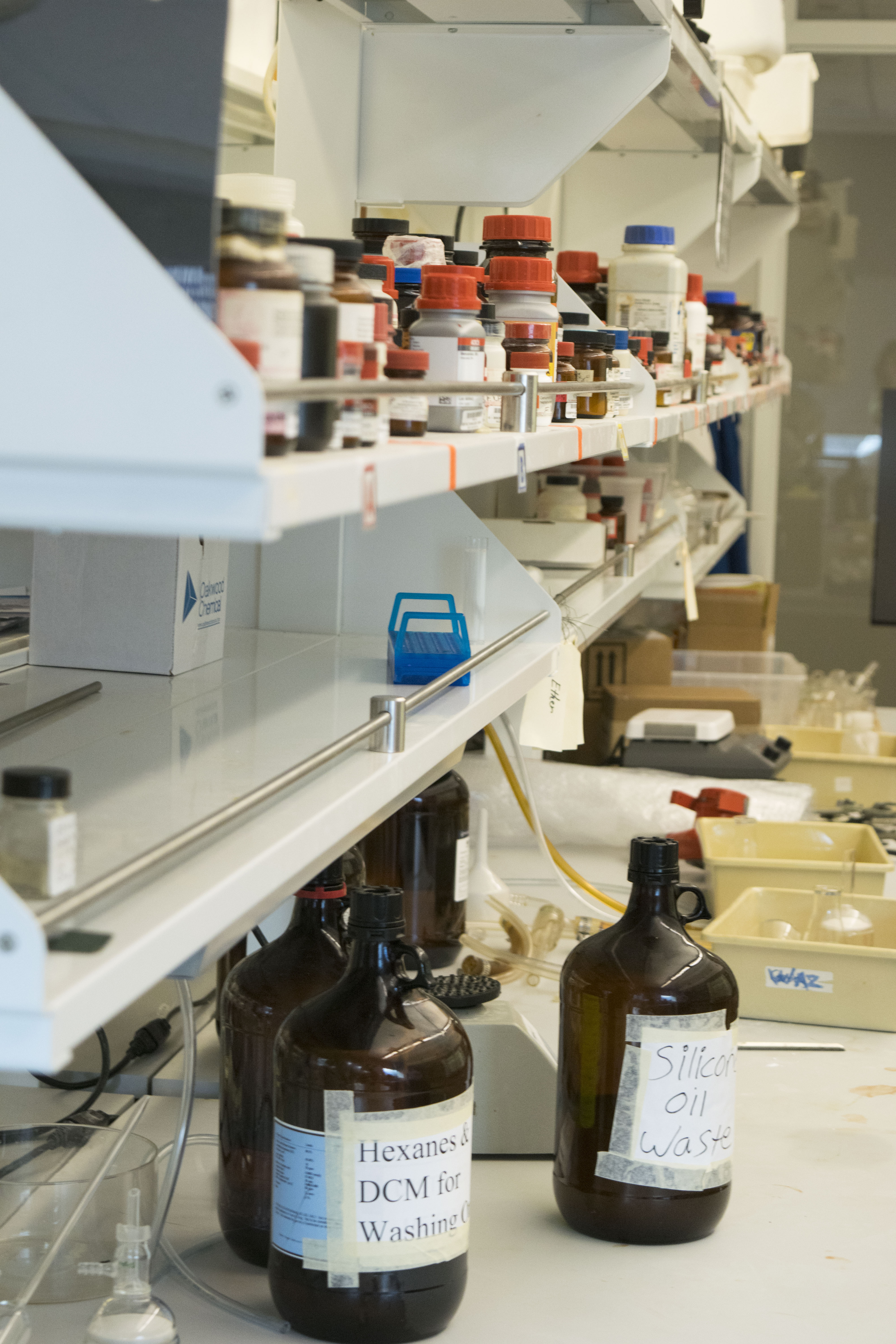EHS Lab Safety

In an age when the public and government are pushing for safer chemical use and disposal practices, maintaining proper lab safety can be tricky. At SUNY Oswego, the Environmental Health and Safety (EHS) department keeps track of chemical use on campus with a material safety data sheet (MSDS), available on their website. In total, EHS manages 6,000 chemicals and more than 3,500 distinct chemical types. Despite similarities between some products their chemical formula can differ between brands, which is why there are so many distinctions. Using eyewear protection and gloves are always suggested when handling chemicals, but professors can set up additional regulations as well. While some chemicals are not dangerous and can be discarded normally, others have to be handled externally. In this case, EHS collects the potentially hazardous so a vendor can dispose of them safely.
“Reducing waste and being familiar with how to eliminate chemical hazards is very important, especially for our environment these days. If you think about the options for chemical disposal, it’s either incineration or landfills and solvents can’t go in landfills because they could get into the water. There are special landfills for some chemicals, but for the most part incineration is the best way to do it.” Charlene Walhert, EHS Shineman Building Manager


